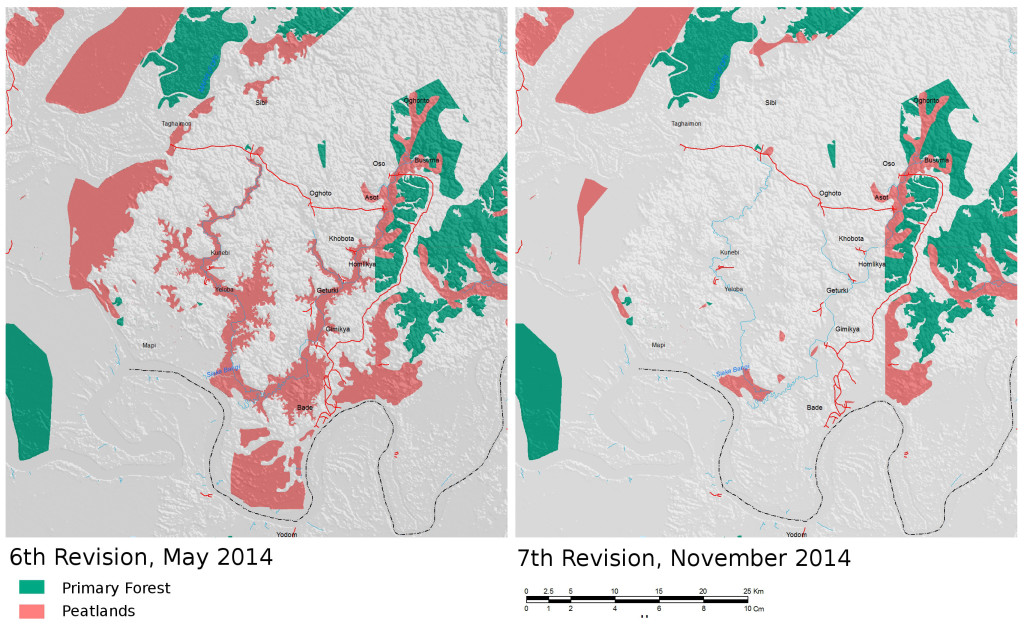Indonesia’s forestry moratorium was renewed on Wednesday 13th May, on the day it was set to expire. The original moratorium dates from 2011, and has already been renewed once in 2013 and supposedly prevented the government from awarding any new permits on areas classed as primary forest or peatland.
Environmentalists in Indonesia had been urging President Jokowi to strengthen the moratorium, but the new version was almost identical to the previous versions. A new map of areas covered by the moratorium is published every six months, with peat marked in pink and primary forest marked in green. Non-peat, non-primary forest, or land where there was already a permit, is coloured grey.
However every six months, the green and pink areas decrease and the grey areas increase (you can see this for yourself as the maps are made available online at: http://appgis.dephut.go.id/appgis/petacetak.aspx ). One reason for the change is that companies appeal to the forestry ministry, claiming that their concession area is not primary forest, or isn’t peatland. The forestry ministry seems very amenable to accommodating these requests. In Papua, much of the land for the MIFEE food estate in Merauke was excluded from the area covered by the moratorium in November 2011 and then in November 2013 several plantation companies across Papua made successful applications to have their concession areas removed, mostly having claimed that their area was secondary forest.
The seventh revision of the moratorium map was published six months ago in November 2014. Once again areas were cut out, and almost certainly coincide with where companies have applied for big plantations. Take a look at this map which shows part of Mappi Regency north of the town of Bade, before and after:
To their credit, the Forestry Ministry do publish a list of correspondence they receive related to changes to the moratorium map, so we can see that three companies (PT Himagro Sukses Selalu, PT Bangun Mappi Mandiri dan PT Mappi Sejahtera Bersama) made applications in August 2014, claiming that their concession areas did not contain peatland. The forestry ministry appears to have responded within the same month, agreeing with the companies’ appeal, and the areas were duly excluded from the seventh revision of the map.
The three companies between them hold permits for 80,000 hectares. Their address suggests that they are part of the Himalaya Group of companies. This group’s core activities are manufacturing, importing and exporting machinery. There is no sign that the group has ever been involved in plantations before.
The Himalaya group didn’t respond to an email from awasMIFEE about their plantation plans back in February. The only report into their plans was published by a small magazine in Papua, Majalah Lani, which said that two of the companies (PT Himagro Sukses Selalu and PT Mappi Sejahtera Bersama) were planning 60,000 hectares of rubber plantations and the remaining 20,000 hectares, allocated to PT Bangun Mappi Mandiri, would be for rice, corn and soya.

